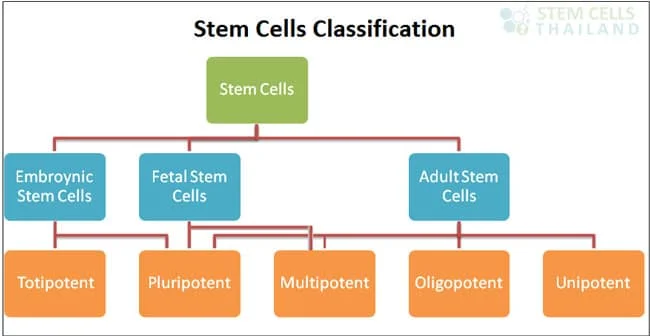
Oligopotent cell lines have the ability to transform into quite a limited number of several other types of cells, an example of which is a myeloid cells,B cells, T cells, plasma cells, NK Cells or the cells comprising the lymphoid system. An example of Oligopotent Cells are myeloid cell can differentiate into any of the blood stem cells found in the lymphatic system.
Lymphoid stem cell can become any of the blood cells found in the lymphatic system or vascular (lung stem cells for COPD or IPF), as these only have enough capacity to differentiate into smooth muscle or endothelial cells. [1] Oligopotent cells are known to be less potent compared to multipotent,pluripotent or totipotent cells but in the case of unipotent cells, they are found to be more potent.
Oligopotent cells are a type of stem cell that has a more restricted differentiation potential compared to pluripotent or multipotent stem cells. While pluripotent stem cells, like embryonic stem cells, can differentiate into almost any cell type in the body, and multipotent stem cells can give rise to a more limited range of cells, oligopotent cells can differentiate into only a few cell types, typically within a specific lineage or family of cells.
While oligopotent cells have a more limited differentiation capacity than pluripotent or multipotent cells, they still play crucial roles in tissue maintenance, regeneration, and potential therapeutic applications.
[1] ^ Majo, François, Ariane Rochat, Michael Nicolas, Georges Abou Jaoudé, and Yann Barrandon. 2008. Oligopotent stem cells are distributed throughout the mammalian ocular surface. Nature, no. 7219 (October 1). doi:10.1038/nature07406. https://www.ncbi.nlm.nih.gov/pubmed/18830243
Zombie cells, also called senescent cells, are non-dividing cells that accumulate in the body due to stress or damage, resisting… Read More
Chimeric antigen receptor-T cell treatment (CAR-T cell therapy) holds immense potential to revolutionize organ transplantation, particularly for patients who struggle… Read More
In the ever-evolving landscape of nutrition science, the discourse around dietary fats has undergone significant transformation. The Regeneration Center is… Read More
New research shows that specific types of brain cells become active after brain injuries and exhibit properties similar to those… Read More
Chemokines, critical components in the immune system, are small proteins that facilitate the migration and positioning of immune cells throughout… Read More
Stem cell research examines everything from gene expression to differentiation capacities to therapeutic potentials. With such diverse data types and… Read More